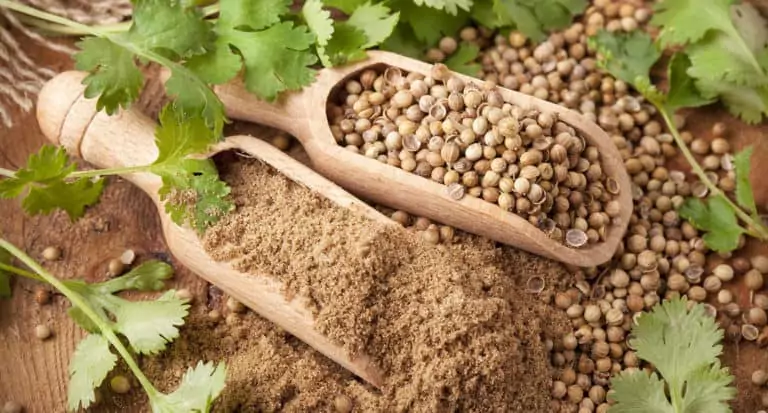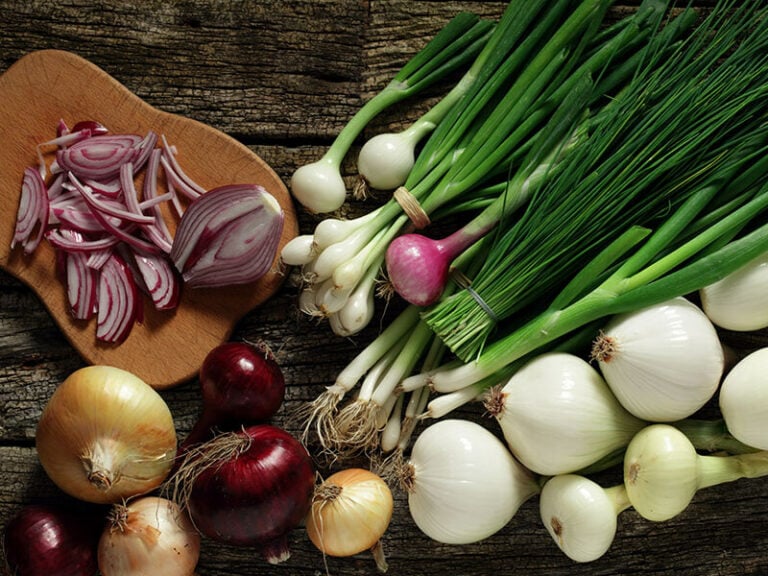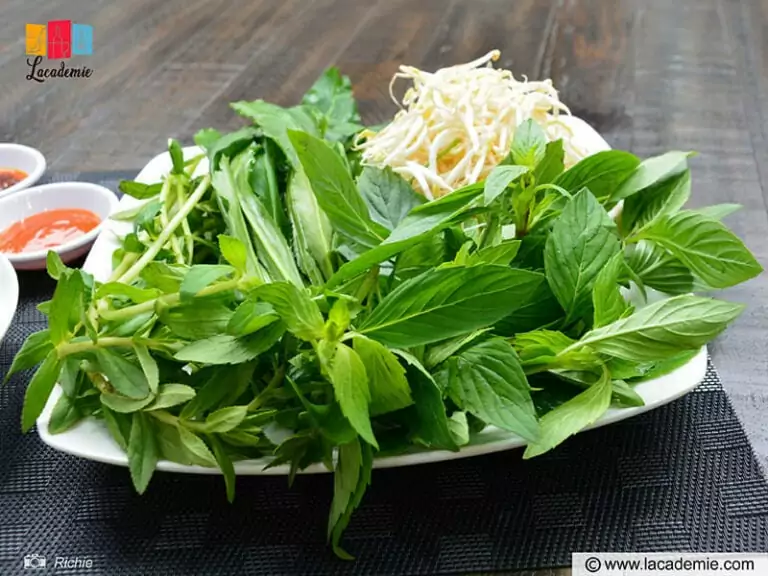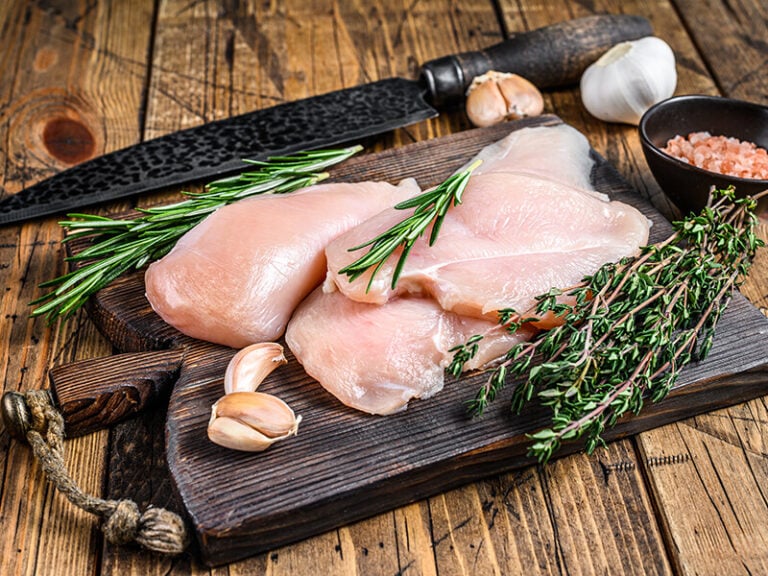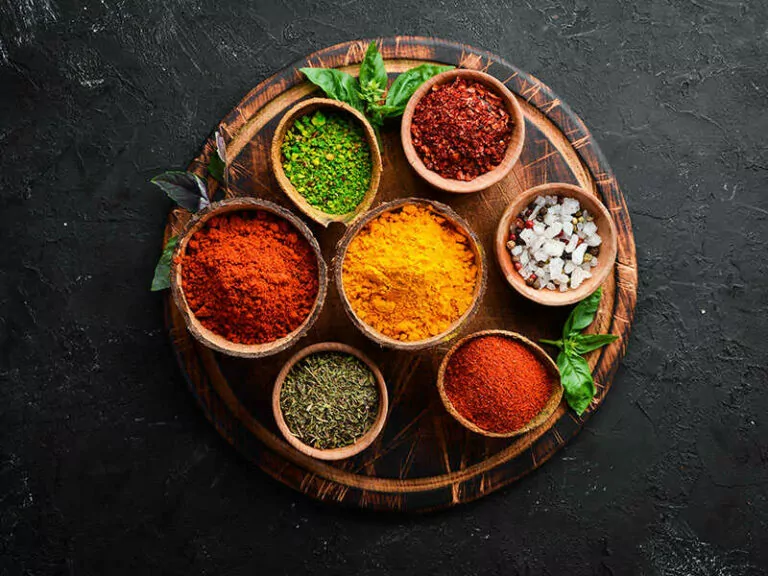You can’t forget cilantro in the Apiaceae family, including cumin, parsley, carrots, or celery. Types of cilantro are now officially the indispensable ingredients in Tex-Mex recipes or Mexican fish dishes. They are often called Mexican or Chinese parsley in Asian cuisine.
Cilantro (Coriandrum sativum) is the leaf of coriander that was first found in Asia and Southern Europe. Cilantro was brought to Mexico and the United States by the Spanish conquistadors of Central and South America in the 1500s. Remember, this is one of the oldest surviving spices.
Derived from the Greek word “koris” and Latin “coriandrum” meaning bug, you can imagine the spicy taste of coriander. In ancient texts from the 7000s, archaeologists have found coriander that appeared in culinary and medicine in China, Egypt, India, and Ancient Rome. The coriander is also found in the tombs of King Tut or caves in Israel 8000 years ago.
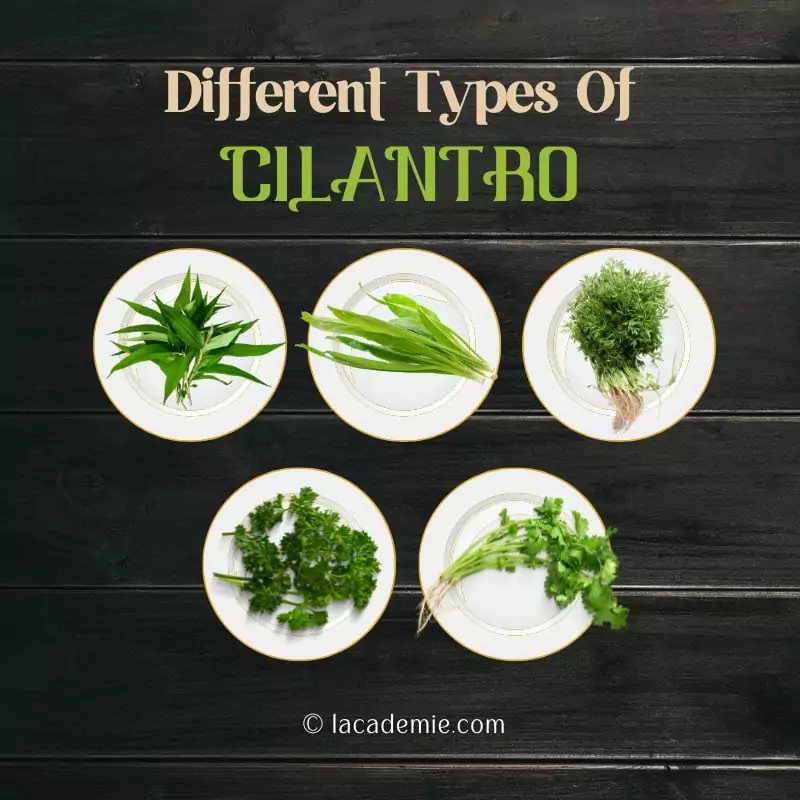
Why Is It Good To Know Types Of Cilantro?
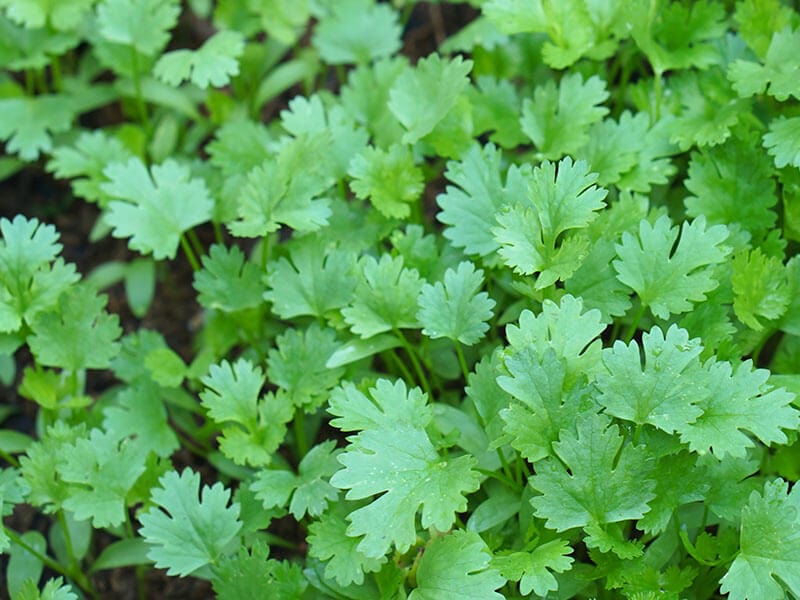
Some may think all cilantro varieties are the same. But it’s not. Even dried cilantro and fresh ones have several differences, not to mention other types.
So, which varieties are suitable for your main course? Or regarding keto side recipes, should you use fresh or dried? Cilantro is an excellent source of antioxidants and helps reduce salt and sodium daily intake. There’s a lot more; stay in reach to note down more information!
Endless Health Advantages
Coriander contains many nutrients and fewer calories. This herb has many nutrients derived from plants, supporting the body’s immune system.
Versatile Usage
You can enjoy the leaves raw or cooked. When added to salads, salsa, pesto, chutneys, or dipping sauces, a refreshing taste is given. Cilantro is one of the best types of garnish. However, you should notice that the flavor of cilantro will change. It is no longer fragrant when too hot; garnish the chopped or whole-leaf cilantro over the top before serving.
The Entire Coriander Plant Is Edible
Let’s use pungent, mixed citrus flavors to describe the smell of coriander seeds and leaves. Remember that the cilantro flavor will fade away during the cooking process. Coriander seeds are usually small and round, with longitudinal ridges on the shell, yellow-brown.
Cilantro Is Widely Consumed Around The World
You can easily find cilantro in world-famous cuisines from Chinese, Indian, Caribbean, Thai, Eastern European, North African, and the Mediterranean. Coriander gardens are present from Southern Europe to Western Asia or North Africa.
Love Cilantro? Hate Cilantro? It’s All About Your Genes
A scientific study determined that in the brain’s olfactory center, there is a gene OR6A2 that recognizes the characteristic smell of cilantro (1). This gene is mainly found in Europeans, making them more sensitive to the soapy smell of coriander.
If you are sensitive to cilantro, crush them before eating to release the enzymes, significantly reducing the soapy smell.
When you consume cilantro in every meal, you realize that it’s not just the advantages. It’s a pleasant flavor to adore!
Dig Deeper Into Cilantro (Coriander Leaves) And Seeds
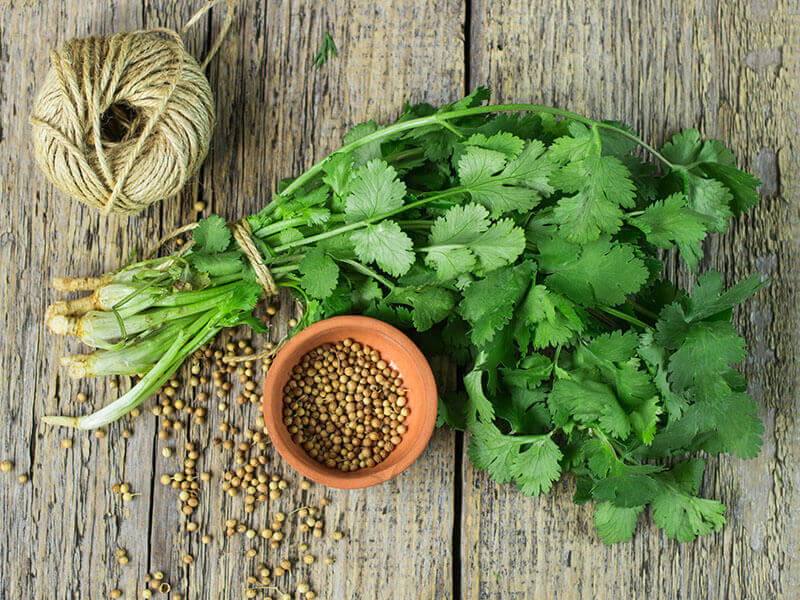
The leaf of coriander- cilantro is often used as an herb because of its strong taste and aroma. The dried coriander seeds of coriander have a more prominent flavor, which you can grind to make seasoning.
It’s your turn to break down coriander leaves and seeds and why cilantro and its alternatives are necessary for daily meals.
How Do Countries Call Cilantros?
One thing about the way countries calls cilantro- coriander leaves. Sometimes, the word “coriander” doesn’t mean the seed only. It means the whole plant. When cooking, people outside the United States often call coriander in recipes created by English speakers in Europe and the United Kingdom.
People call this herb coriander leaves and coriander seeds in most nations. However, some Americans and Spanish call it cilantro, coriander leaf in Spanish, or sometimes Chinese parsley. Most American and Mexican cooking ideas use the word cilantro.
Moreover, the same plant will produce ground coriander or coriander seeds. Seeds are often used to grow or make seasoning mixes and added to stews, curries, or sauces because of their characteristic warmth.
Cilantro In Regions By Year
Most countries worldwide grow coriander for commercial purposes; small or large scale is quite flexible. Mexico is the largest producer and distributor of cilantro.
The output is up to 56 million pounds, not to mention the state of California, the leading producer in the United States. The citizens in Washington, Oregon, and Arizona grow cilantro with lower yields.
You can find cilantro all year round along the coasts of Southern and Central California, the period from March to mid-November is the primary season. In Arizona, Yuma, or Coachella Valley, California, people plant cilantro from late September to November in the winter. The harvest time is around November to March.
Think immediately of the upper Northwest region from May to November when looking for cilantro.(2)
Various Types Of Cilantro Around The Globe
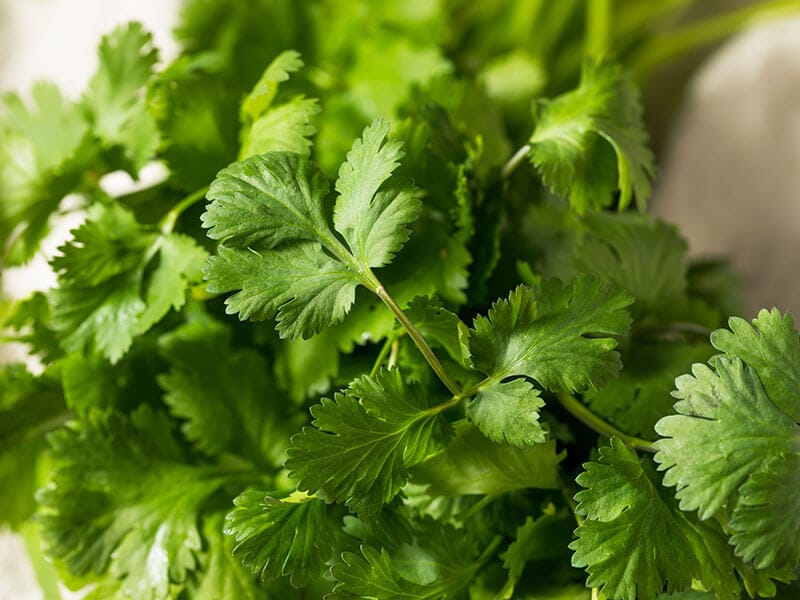
Cilantro has wide varieties such as Long-Standing, Terra, Lemon, Delfino, Leisure, Slot Bolt, Jantar, Moroccan, Santos, Caribbean, and Costa Rica. If you need plants that don’t flower when humidity is too high, choose Santos and Slo-bolt, they are bolt-resistant types.
You are getting to know the differences between the taste, shape, and position of the most popular kinds of cilantro. Fasten your seat belt, and let’s go!
Cilantro Varieties In Different Countries
While European countries and the UK call coriander for coriander leaves and seeds, Americans only call cilantro for coriander leaves. In India, they distinguish coriander leaves and roots by calling coriander leaves “dhania.”
Because of its refreshing and refreshing taste, Latin cuisine makes full use of cilantro in spicy dishes. Soon, you will know the three basic kinds of cilantro in Mexico, India, and Vietnam!
1. Culantro (Mexican Coriander/ Chadon Beni/ Recao/ Black Benny)
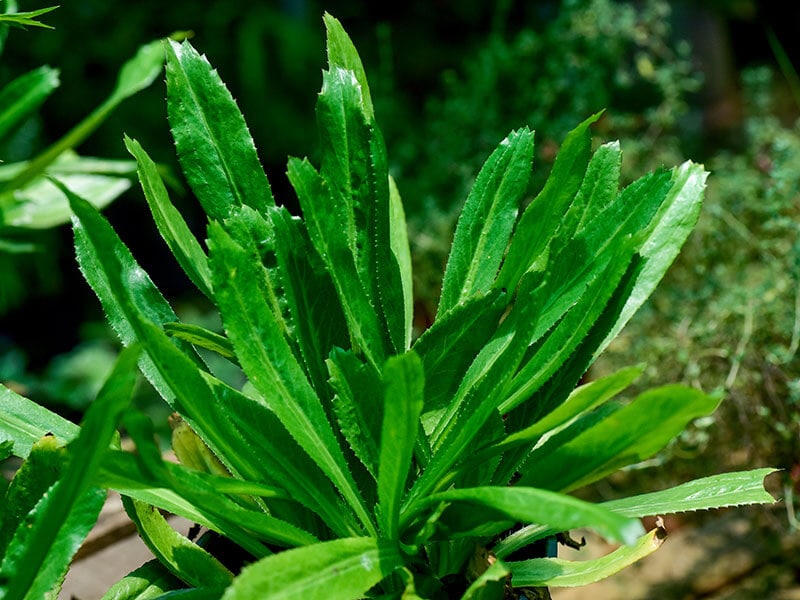
The tropical region of the Americas or the West Indies is considered the origin of Culantro. Not only brings rich flavor to dishes, but cilantro is also used to relieve pain and antibiotics in medicine. You can easily find culantro in the ingredients of medicines for diarrhea, fever, chills, and vomiting. Jamaicans often use it to treat convulsions and colds in children.
This type of cilantro is a saw leaf herb because the edges of the cilantro leaves are often toothed or serrated. The smell is similar to cilantro but a little stronger. It grows best in the summer, turning the garden of cilantro-loving families full of fragrance all year round.
Culantro has sweet citrus and floral aroma and is an ideal combination with black pepper, cumin, and thyme. Soon you will find cilantro in popular Mexican dishes such as stews, soups, or chorizo.
Maybe you miss the interesting things; other names of culantro are fitweed, saw leaf herb, spiritweed, Black Benny, or spiny coriander. People in Puerto Rico call this popular herb Recao. Some regions in Caribe named it Chadon Beni.
Shape: Small, dark green, lance-shaped, long leaves like a rosette
Taste: Bitter like cilantro, more potent, soapy flavor
Here’s the way to grow Culantro and its magical medicinal value!
2. Vietnamese Cilantro (Rau Ram)
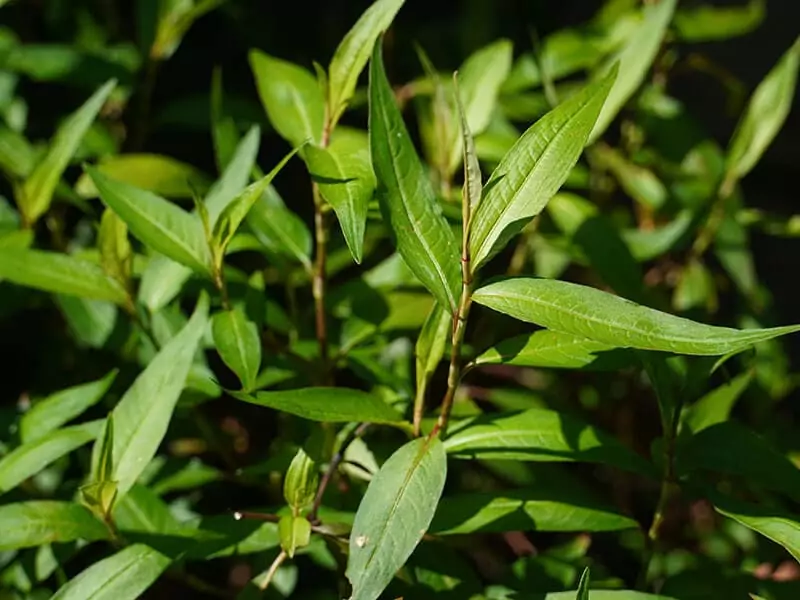
You can quickly identify Vietnamese cilantro by looking at the lines on the veins on both sides. The leaf margins are smooth, and the leaves are narrow with dark shade.
One note is that the leaves will be damaged if frozen, and you should not eat them. Preserve by placing the stem in water, covering the leaves with a plastic bag, and keeping it in the refrigerator for about a week.
There is a typical Vietnamese chicken salad using this herb. Add the whole plant, including the cilantro stem, to your salad. If you want to use cilantro in hot foods, chop it up and sprinkle it into stews, noodles, or soups.
In Southeast Asian countries, this herb aids digestion and is anti-inflammatory. Rau Ram’s fiber helps purify the body and warm the digestive system. Leaves are effective in treating colds and flu.
Shape: Pointed, oblong, flat leaves, purple streak in the center.
Taste: Like cilantro, more spicy, peppery, and lemony
The spicy and lemony flavor of Vietnamese cilantro goes perfectly with fried rice. Try
3. Indian Coriander (Dhania)
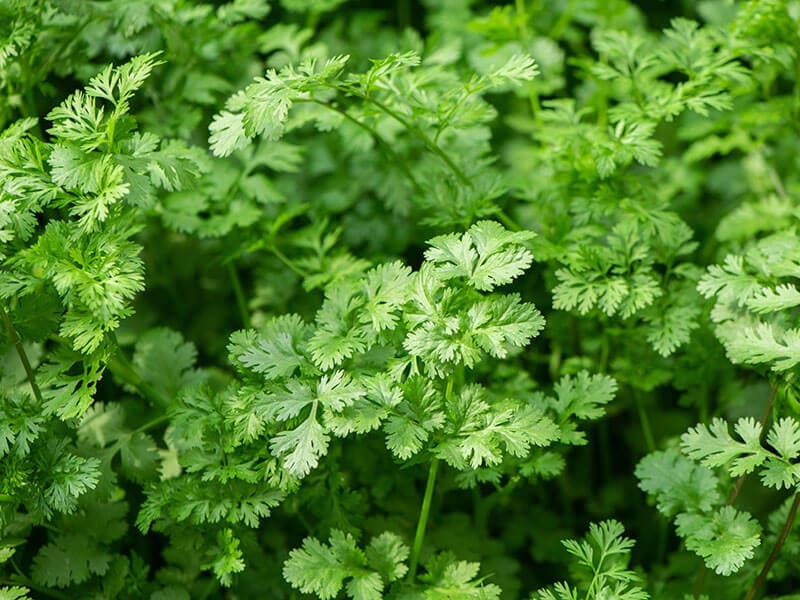
Summer coriander in India is exceptionally rare and takes two years to complete its biological life. You should prepare measures to prevent pests and estimate the height of the plant to reach about 2.5 feet.
It will be perfect if you buy seeds made in India; they are very different from the group of cilantro from temperate climates.
Soon you will adore the sauce with cilantro dipped in Tikki or Indian snacks. And here is a bold Indian recipe for you: roast Indian coriander with carrots, then puree and add to carrot soup, and add a little orange juice for a sweet smell.
Shape: Mound-like shape, rounded.
Taste: Tasty, sugary, slightly citrus.
Other Cilantro Varieties
You can easily recognize the striking differences between cilantro and parsley, oregano, or mint. However, the varieties of cilantro are more delicate than each other.
Based on their names, Leisure, and Long-Standing, a few species you can recognize that won’t seed during the warm weather. Another typical slow-growing cultivar is Slo-bolt. Hurr with dishes that use fish and chicken; 11 types of cilantro with many varieties from different countries are waiting for you to discover!
4. Delfino Cilantro
The cool fall and winter weather is perfect for increasing Delfino cilantro, a staple for summer salsa dishes. With significantly more yield than other varieties, feel free to use cilantro to make homemade salsa instead of buying salsa from stores.
Plus, it goes well with any menu that requires chopped cilantro. You can upgrade soups, vegetables, gravies, and fish cooking ideas to the next level!
The canopy of Delfino Coriandrum sativum resembles a fern and has much small dense foliage. It’s terrific to own a garden that grows coriander leaves, bolts slowly, and thrives when hot.
Shape: Frilly, open, fern-like leaves like dill
Taste: Strong parsley flavor with citrus
5. Moroccan Coriander
This Moroccan coriander is outstandingly warm, spicy, and less acidic than other types. The coriander seeds add a mild sweet citrus flavor to soups, cakes, curries, and chutneys.
This cilantro is imported mainly because of its pleasant sweetness in most countries. Middle Eastern, Indian, and Latino cuisines love this ingredient. Moroccan coriander not only deodorizes but also highlights the sweetness of fish and chicken dishes.
The Moroccan variety usually sprouts early and tolerates hot summer weather. However, you should not keep cilantro for too long in the garden.
Shape: Short stems, small leaves (0.04-0.12 inch), dark green
Taste: Warm, milder than Indian coriander, toasty notes
6. Slo-Bolt Cilantro
This herb is not only resistant to bolt but also easier to grow than common herbs. The taste of Slow bolt cilantro is impressive!
A carrot family member, this cilantro is trendy in Latin America and Asia and pairs well with Mexican dishes or salsa. The young, tender coriander leaves are perfect for adding to guacamole or salads. The leaves tender will make the citrus taste fresher.
Besides, the coriander seeds are typical representatives of Indian dishes. As the cilantro matures, the seeds will be noticeably dry and spicy. What a cook match for curries in India and Asia!
Shape: 4-6 inches tall, slightly large leaves, leafy greens
Taste: Seeds (bright pungency, deliciously spicy) & leaves (citrus note)
7. Calypso Cilantro
There’s a new breeze in your garden called Calypso cilantro. Strong stems with many branches, outstanding yields, and large leaves packed with delicious cilantro flavor.
During the cooler months of Southern California, cilantro gardens grow green. If you buy the slowest bolting cilantro seed, you will extend the bolt period by three more weeks.
This cultivar is vigorous, producing many perfect leaves for sauces and dips. You can recognize a few species of the hallmarks of Indian, Mexican, and Thai cuisine. I especially like using this cilantro to make salsa because the mild bitterness blends well with the sourness of tomatoes and lemons.
Shape: Medium green, upright, 12 to 18 inches high and wide, ample, uniform leaves
Taste: Slight lemony like Slow-bolt cilantro, medium bitter
8. Long-Standing Cilantro
This early-growing cilantro produces high-yielding seeds and fast-maturing leaves. The leaves have a spicy taste, but the sweetness is calm and suitable for marinating meat or pickles. The seeds of Long-Standing cilantro are used to make pastries, bread, or curry powder.
This variety of cilantro is slow to flower, and the rate of leaf shedding gradually decreases, keeping the rich flavor available.
You’ll love adding cilantro to chicken soup or foods from the Caribbean, Mexico, or Asia.Add crushed cilantro seeds to enhance the taste when making cookies or cooking stews.
Shape: Fine stems, leafiness, 24 inches tall
Taste: Seeds (spicy, nutty, citrus flavor) & leaves (sweet, strong, sharp scent)
9. Caribe Cilantro
When hearing Caribe cilantro, immediately think of stems and leaves, and coriander is a short term for coriander seeds in some areas. The Caribe cilantro is an improved version of standard cilantro. You can keep cilantro for a long time in the garden, withstand summer’s heat, and resist bolting.
Are you happy to have a secret ingredient for beans, salads, and soups? Let’s use cilantro to make dipping sauces for fried foods or spread over sandwiches on your vegetarian days.
In addition, mix chopped Caribe coriander leaves into stuffed vegetables, and serve with mayonnaise and mashed avocado as a herb. Feel free to customize your own!
Shape: Dark green leaves, slightly thin stem
Taste: Clear flavor, fairly sweet
10. Santo Cilantro
If you need a leaf plant, choose Santo cilantro because it grows slowly. It’s better to eat raw cilantro because the cilantro flavor will lose a lot when hot.
This cilantro is also a member of the carrot family. A mild coriander flavor, perfect for seasoning chicken, salad or bean dishes. Especially the sour and spicy dishes in the Southwest region.
It is said that growing Santo for leaves but taking advantage of its seeds and flowers also gives you many significant benefits. Don’t worry. Try using flowers to decorate or mix into your healthy salad meal-prep ideas. Are you a true veggie lover?
Shape: Broad, celery-like leaves, fresh green
Taste: Sharp scent, quickly fade flavor when cooked
11. Leisure Cilantro
Let’s call Leisure cilantro a taste standard cilantro. You can eat the whole seeds, stems, leaves, and flowers. This cilantro variety is rarely too bitter like other varieties because it has been bred to limit flowering when it is hot.
It is a hardy and slow bolting variety but very energetic. Then you can take the seeds to spice up the dishes.
In the cool autumn and spring, these coriander leaves grow very well. When the weather is warmer, cilantro will flower, and the flowers will turn pink and gradually turn into cilantro.
Shape: Feathery, round and tender leaves, bright green, flower stalk in the center
Taste: Zesty, aromatic, bright, mild like Santo cilantro.
Just plan to plant the cilantro early in the season, then you can get both the cilantro and coriander seeds when the soil temperature reaches 167℉.
Cilantro – A New Flair In Your Recipes
Whether you use cilantro as a seasoning to enhance the aroma or as a must-have ingredient in every dish, let’s look at three typical cooking ideas with cilantro. Your teams indeed ask for more!
1. Cilantro Guacamole
Never skip the step of crushing the cilantro, jalapeno, onion, and garlic into the sides or bottom of the molcajete. You will soon elevate this guacamole dish; essential but nutritious ingredients like cilantro, lemon, garlic, and jalapeno will awaken your taste buds when combined in balance.
2. Salsa Verde
Think carefully about your desired taste when making Cilantro Salsa Verde. Add herbal coriander leaves, fresh lemon, and sweet honey into the mixture for a typical sweet and sour taste. You’ve finished a homemade dipping sauce with just three simple, more natural steps than canned.
3. Cilantro Butter
A light green butter that is addictive when mixed with cilantro, lime juice, and green onions. A standard buttery and smooth sauce to spread on toast or store in the fridge for later. Cilantro butter will be more delicious when served with steamed vegetables and a bit of salt. For hot corn-on-the-cob, you squeeze some lime juice.
Tips To Harvest & Store Cilantro
No matter which varieties you have, fresh cilantro has many preservation methods. And here are some of the easiest ones.
Cut coriander leaves anytime you need them. Pick the new, upper leaves, but do not choose the lower ones because they are often old. Remember that you should not dry cilantro like other herbs. The more it dries, the more flavor it will lose.
The leaves and stems of coriander are very susceptible to waterlogging, so as soon as you bring the vegetables, remove the strings that bundle the stems together. Immediately place them upright in a clean glass jar of water like a flower vase. Turn a plastic bag upside down, cover with foil and refrigerate.
When cooking, wash and wipe the leaves, cut them into small pieces, then put them in a freezer tray with water or a little oil since you mainly use chopped coriander. Once frozen like ice cubes, feel free to add them to marinades, sauces, and soups.
Growing cilantro is a hard task, so you need to trim and preserve it effectively!
How Nutritional Is The Cilantro?
USDA has published a national nutrient database on cilantro showing that cilantro is low in saturated fat, cholesterol, and calories (3) .
It provides a rich amount of zinc and thiamine, vitamin C, vitamin A, vitamin B6, vitamin K, vitamin E (alpha-tocopherol), magnesium, phosphorus, potassium, dietary fiber, niacin, riboflavin, folate, iron, calcium, and pantothenic acid.
Many malaises have used cilantro as a remedy. Coriander leaves have the effect of supporting digestion and increasing appetite. The coriander seeds or their substitutes treat dysentery, indigestion, and nausea.
After going through the specific nutrients below, add this superfood to your daily menu to enjoy how dense the nutrients are!
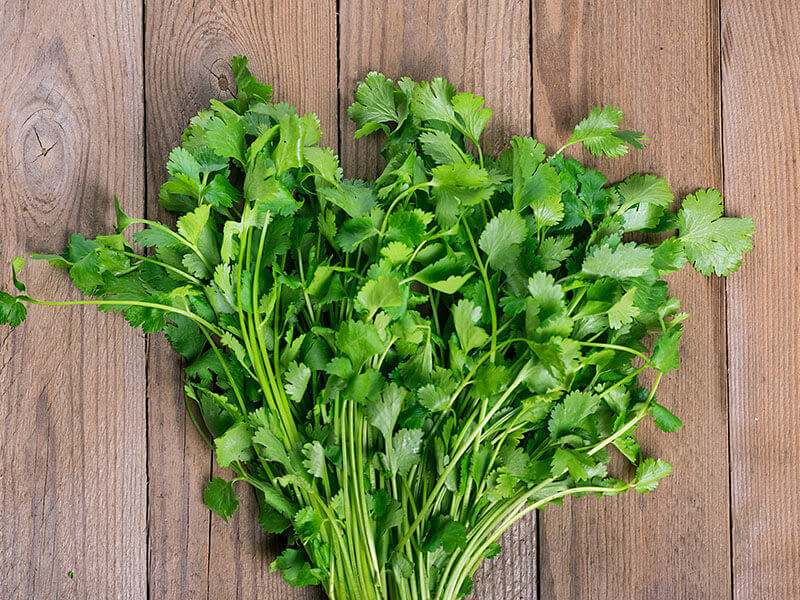
Vitamin A
The vitamin A content of cilantro is more than 100% of the recommended value for both men and women, up to 7,625 international units in 4 ounces of coriander leaves. Note that consumption of over 10,000 international units per day will cause poisoning.
Vitamin K
Vitamin K accounts for a fairly prominent content in cilantro. With a 4-ounce serving, you’ll get over 350 micrograms, up to 440% of the daily recommended intake. Interestingly, heating does not affect, but freezing reduces the number of inherent vitamins.
Fiber
Eating 4 ounces of cilantro will get 3 grams of fiber. Fiber keeps you fuller for longer, lowers cholesterol, and promotes regularity. It helps people with diabetes stabilize blood sugar levels. Make a high-fiber side dish by mixing cilantro with quinoa or brown rice.
Riboflavin & Folate
Coriander contains two moderate vitamins, folate and riboflavin. A serving will have 70 micrograms of folate and 18 milligrams of riboflavin per 4 ounces. Ideally, you’ll get the recommended 18% folate and 11% riboflavin.
Macronutrients
The amount of carbs and protein in cilantro is relatively uniform. There is little fat. 4 ounces of cilantro typically includes 2 grams of protein, 26 calories, carbohydrates, 4 grams, and 1 gram of fat. Compared to other vegetables and herbs, the amount of protein in cilantro is pretty high.
Manganese
Each serving of cilantro contains about 5 grams of manganese per 4 ounces. Women are recommended 1.8 milligrams, and men are 2.3 milligrams each day. Try making a salad rich in manganese by mixing bulgur wheat with tabbouleh.
Every Cilantro Differs From Another
Let’s call coriander a multi-tasking herb. The seeds are used as a spice, and their leaves are used to decorate and season dishes. It’s a big mistake when your garden or kitchen lacks cilantro, which is diverse and extremely rich in flavor.
Never wait too long; quickly share this post with your friends and family. How many of them know these interesting characters of cilantro? What kind of cilantro are you most impressed with? Kindly let me know your experiences and the recipes you have created using cilantro.
I hope my post can help. Thank you so much for spending time here, my true dear!
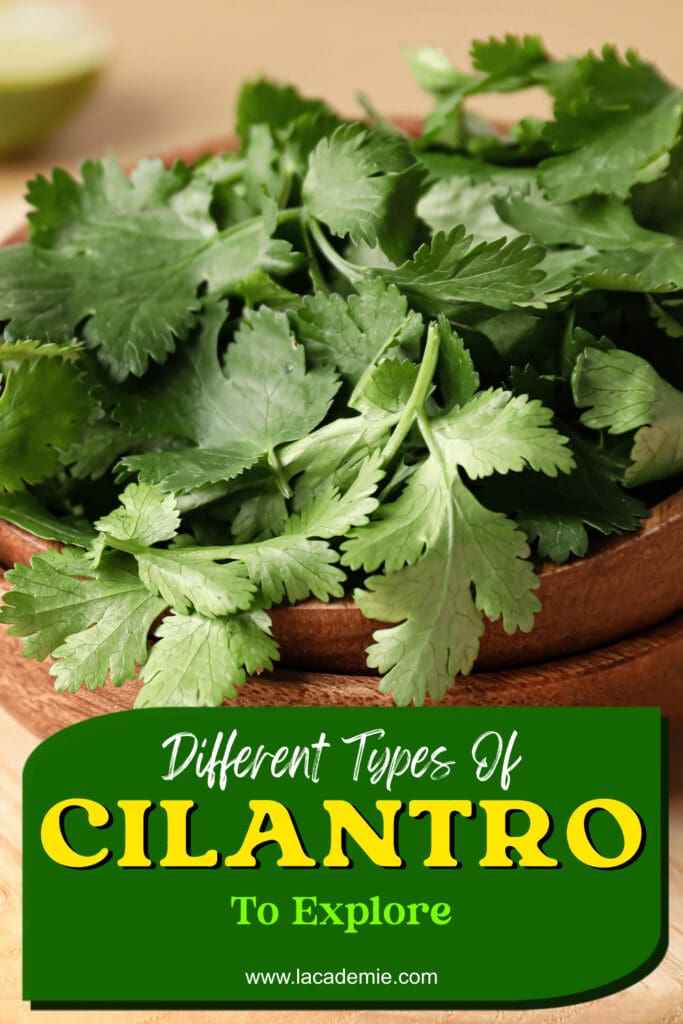
References
- Arxiv.org. 2022.
- Wifss.ucdavis.edu. 2022.
- fdc.nal.usda.gov. 2022.

